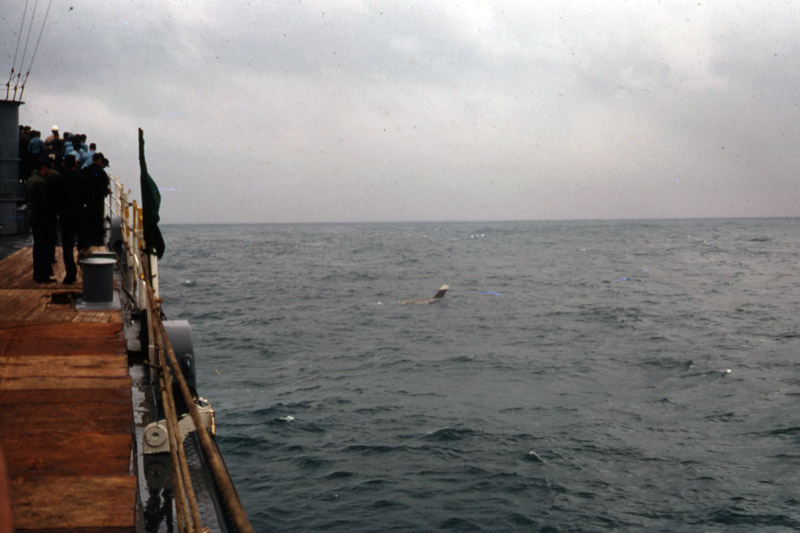
In 1968, Dan Verver served on board USS Providence CLG-6 light cruiser. He worked nights and went up topside with his camera when his shift ended. On 12 February 1968, he recorded a rather unique event: the ship's crew spotted a floating drone, and decided to recover it. His brother, Gary Verver, shows the photos on his extensive Flickr account. Dan and Gary kindly provided the photos for inclusion on this AQM-34 website.
The USS Providence deck log for Monday 12 February 1968 reads:
15-18 Underway as before. [as in 1500 to 1800 hours probably, but unsure what time zone]
1454 Flight quarters [personnel at critical positions to conduct safe flight operations]. Drone aircraft sighted. Helo #1 being launched to attempt recovery of drone
1518 MWB #2 [marine whaleboat] lowered to the rail for possible aid in drone recovery
1522 Launched helo #1. Helo proceeding to drone to lower swimmers in water and attempt recovery. Recovery attempt proved unsuccessful, helo #1 returning to the ship
1541 Recovered helo #1. Commenced maneuvering various courses and speeds for shipboard recovery of drone
1549 Put MWB #2 [marine whaleboat] in the skids
1551 Set the rearming detail
1604 Drone alongside starboard side of ship, being lifted aboard via the boat boom on the missile house
| The Firebee is clear in sight, although only the vertical tail is really clear of the water surface. | 
|
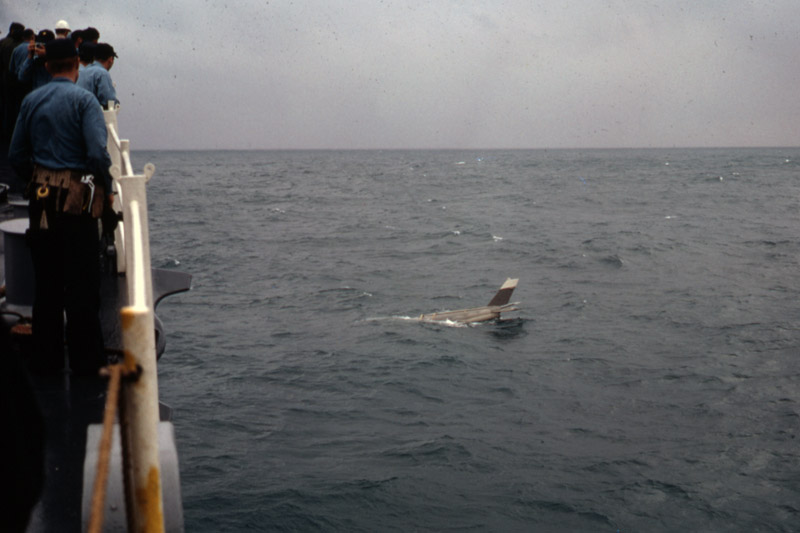
| The Firebee was probably bobbing around, since it's more out of the water in this photo. |
| The Firebee is alongside the ship. There are no endplates on the horizontal tails. Under water a small part of the parachute system can be seen. Maybe it's the drogue / brake chute, considering its apparent small size? | 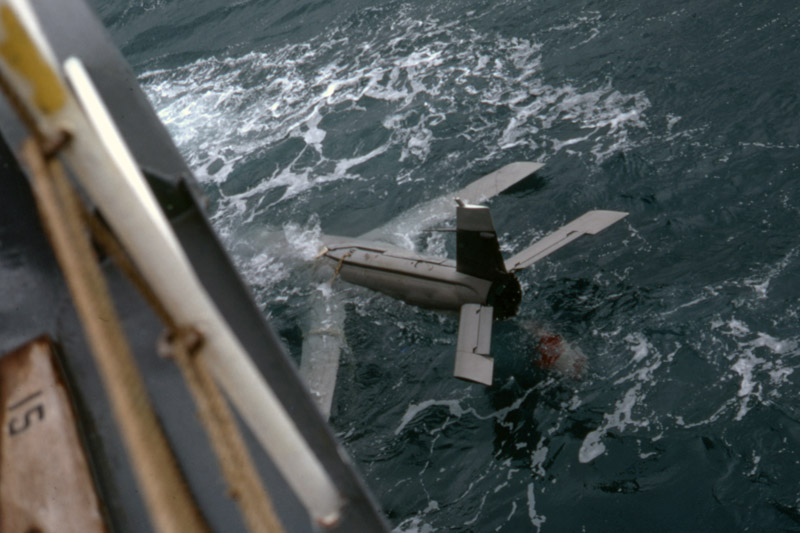
|
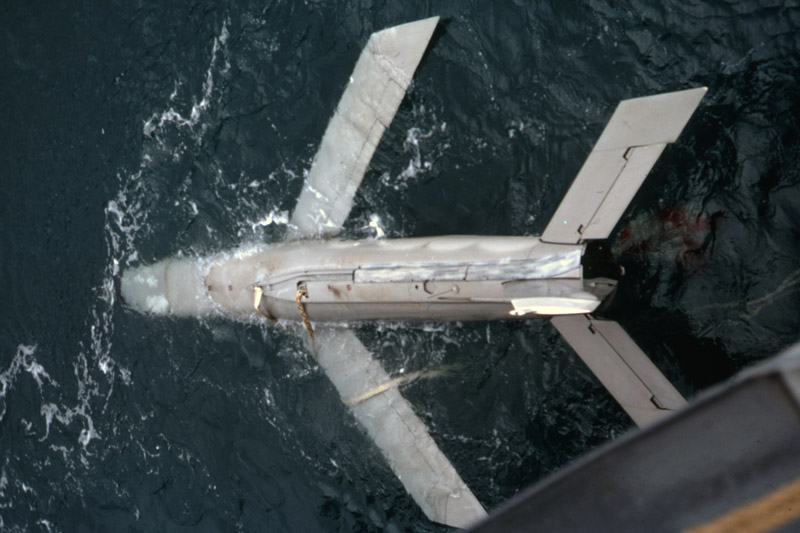
| The first total view of the Firebee. It looks to be painted FS x6440 'light gull gray' on the top side; whether it's flat, satin or gloss can't be determined since the paint is wet. A lighter color is visible on the right rear fuselage. |
| A great photo that shows the three-color camouflage. The main decent parachute risers have wrapped around the left wing.
A detail not seen on later 147S series models are the cover strips over the parachute riser cavity in the drone's spine. | 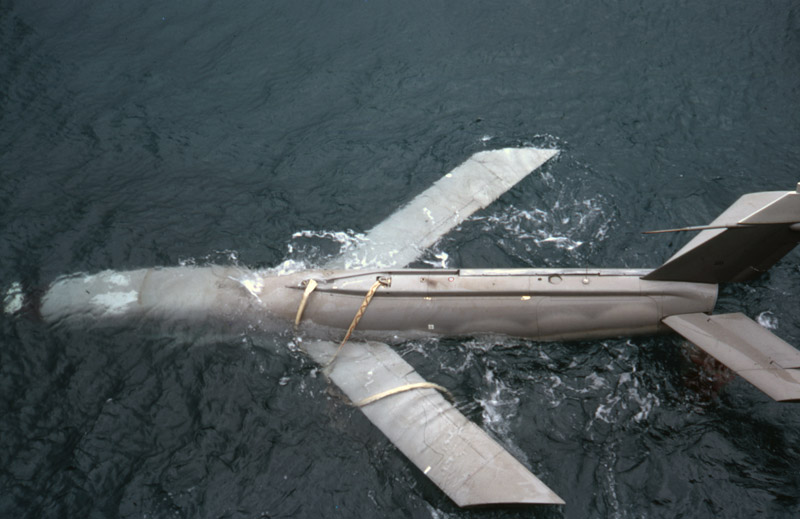
|
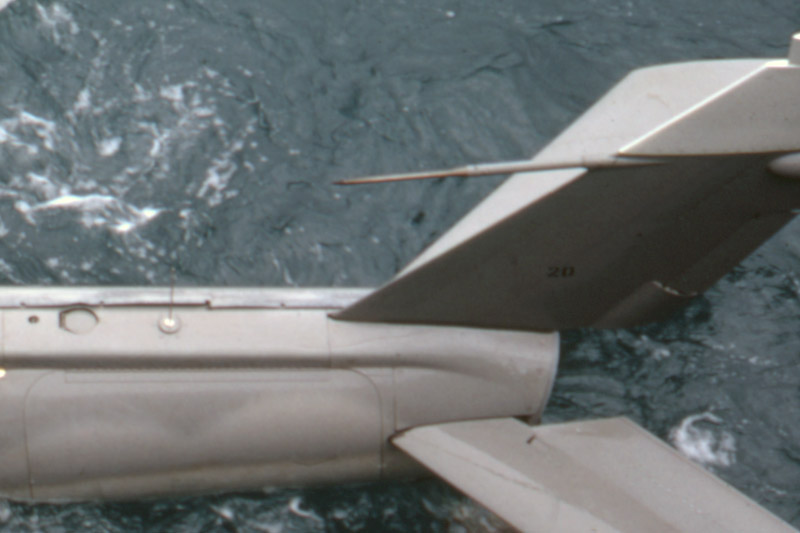
| A close-up of the above shows the vertical tail with the number '20'. The left side of the vertical tail appears to be painted in a darker shade of gray. |
| The dark gray vertical tail can be seen here again, but maybe it's the lighting? | 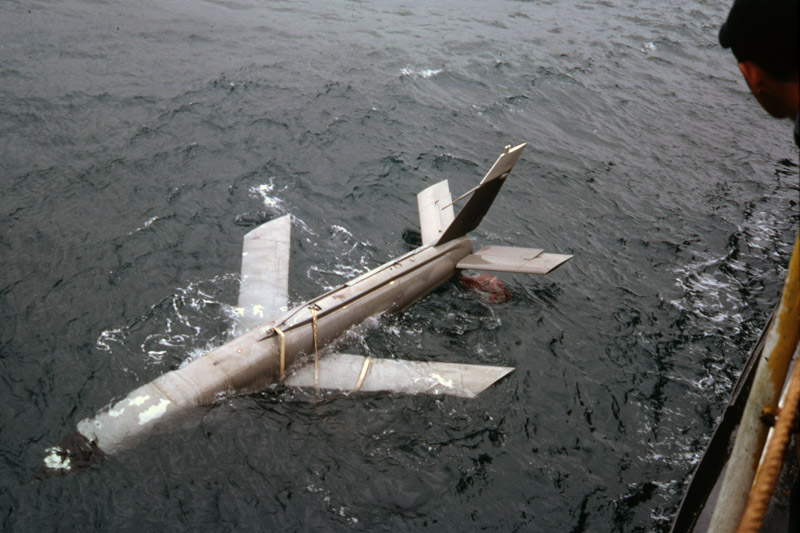
|
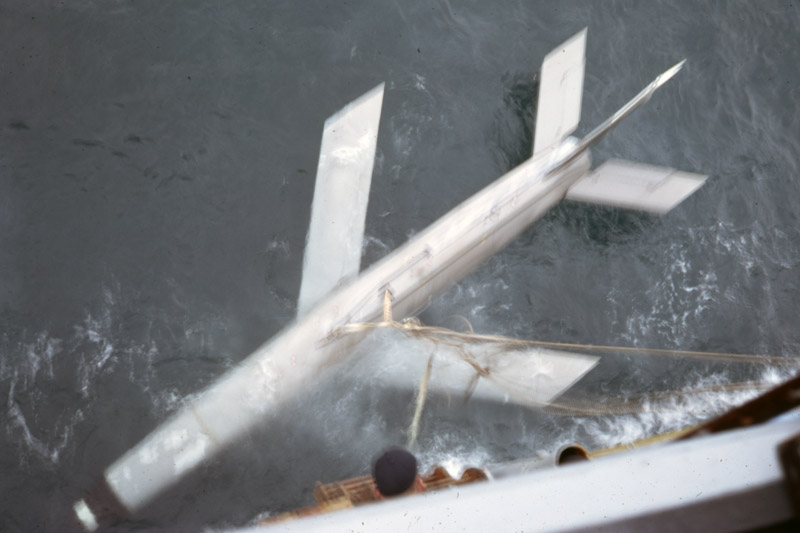
| The wide parachute riser has been caught, and recovery is starting. |
| The right side of the vertical tail appears to be painted in a shade similar to the rest of the airframe. | 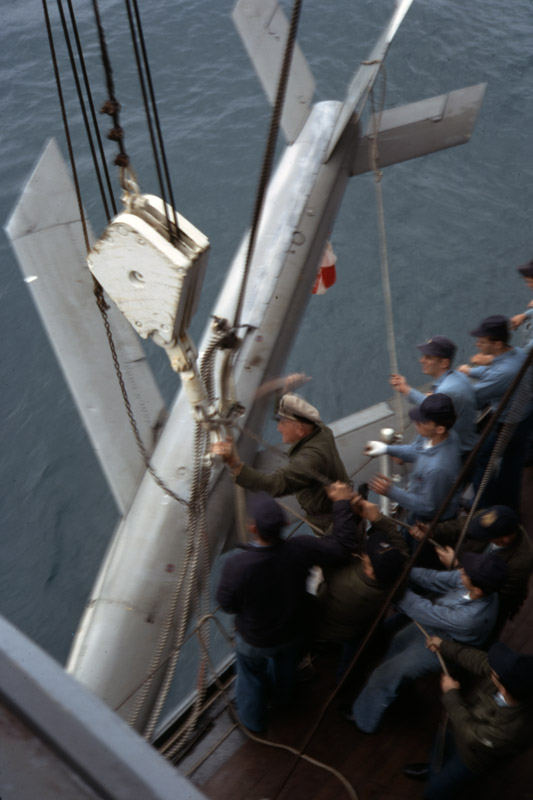
|
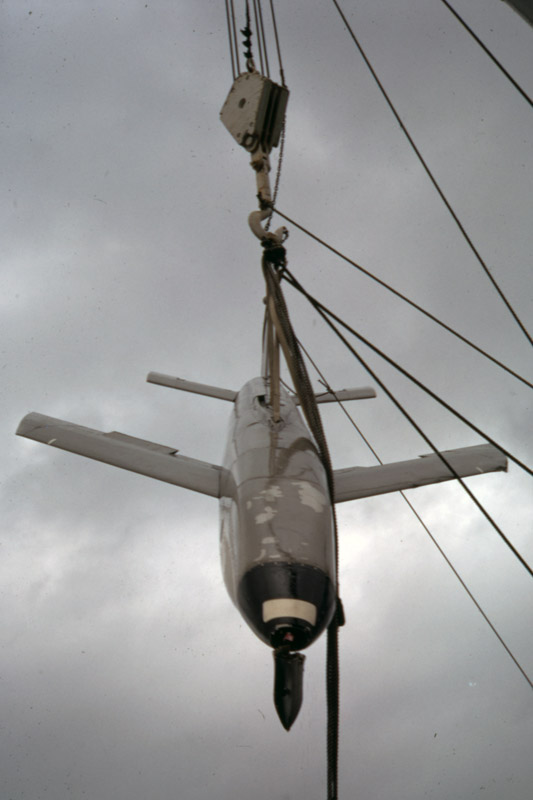
| There's minimal damage visible, just the extension for the AoA sensor is broken. The flaking 'light gull gray' paint on the camera hatch is interesting, suggesting fair use of this Firebee. |
| The Firebee is safe on deck. But we don't know what happened to the Firebee after this point. | 
|
| By linear interpolation of the ship's positions at 1200 hours (15° 50' N, 108° 27' E) and 2000 hours (16° 19' N, 108° 29' E), the position at 1600 hours was approximately 16° 5' N, 108° 28' E. I calculated this to be approximately 30 km (16 nm) east from Da Nang air base. That makes a lot of sense, since Firebees were recovered at Da Nang after their missions over North-Vietnam. See the Reconstructed AQM-34L missions page for more information. | 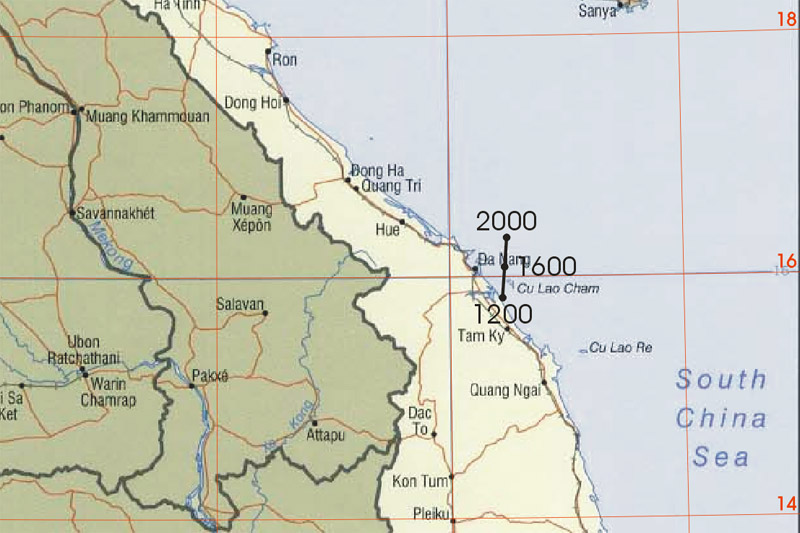
|
| The recovery date tells us what version it is. 'Lightning Bugs' page 172 shows that the Model 147SA was the only version from the then-new S-eries in operation in February 1968. It was still secret enough not to receive an 'AQM-34' series designation.
'Lightning Bugs', Chapter 19 'Quantity production', reports little about the specifics of the SA version. It merely tells that Ryan went back to the simple target drone wing for the low-level mission, but that improvements (changes) kept being asked for. To streamline the latter, the SA, SB, SC and SD models were produced, each standardized. Fourty examples of the SA model were built, and used from January to May 1968. | 
|